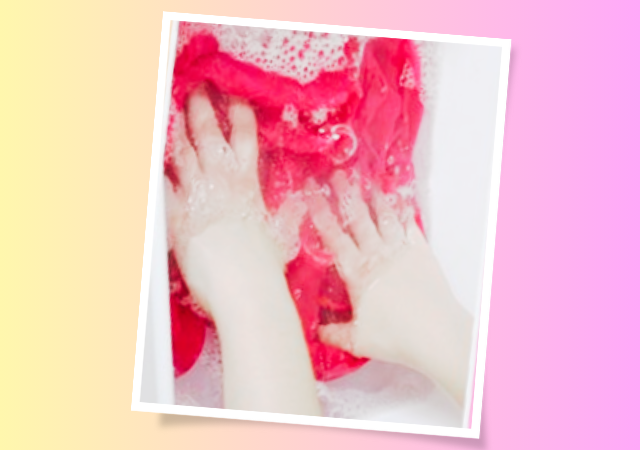Dupatta Care: How to Clean, Store, and Preserve Your Dupatta Collection
Introduction
Welcome to “Dupatta Care: How to Clean, Store, and Preserve Your Dupatta Collection.” Dupattas, cherished for their cultural significance and intricate designs, deserve meticulous care to maintain their beauty and longevity. In this guide, we delve into the art of preserving these graceful garments. Explore tailored cleaning techniques for various fabrics, discover optimal storage practices to prevent damage, and gain insights into preserving embellished dupattas. From safeguarding against pests to understanding the impact of sunlight, this comprehensive resource ensures your dupatta collection remains a timeless testament to elegance. Embrace the journey of nurturing and sustaining these cultural treasures with our expert tips and recommendations.
Dupatta Care: How to Clean, Store, and Preserve Your Dupatta Collection
Cleaning Dupattas

A. Types of Fabrics and Their Cleaning Requirements
- Cotton Dupattas: Begin by separating cotton dupattas from other fabrics. These can generally withstand regular washing. Use a mild detergent and lukewarm water, gently massaging the fabric to remove dirt. Avoid wringing, as it can distort the shape. Air dry in a shaded area to prevent fading.
- Silk Dupattas: Silk demands more delicate handling. Dry cleaning is often the safest option to preserve the fabric’s sheen and prevent damage. In case of stains, use a gentle silk-friendly detergent with cold water and blot the stain rather than rubbing.
- Chiffon and Georgette Dupattas: These delicate fabrics require extra care. Handwashing in cold water with a mild detergent is advisable. Gently swish the dupatta in the water without wringing. Lay flat to dry to maintain its original shape and avoid stretching.
B. General Cleaning Tips
- Handwashing vs. Dry Cleaning: While handwashing is suitable for many dupattas, delicate fabrics like silk may benefit more from professional dry cleaning. Always check the care label for specific instructions.
- Stain Removal Techniques: Act promptly when a stain occurs. Blot the stain with a clean cloth, working from the outside towards the center. Test any cleaning solution on a small, inconspicuous area first to avoid discoloration.
- Avoiding Harsh Chemicals and Detergents: Opt for mild, pH-neutral detergents to protect the fabric and colors. Harsh chemicals can damage delicate fibers and lead to fading.
Storing Dupattas
A. Choosing the Right Storage Space
- Closet vs. Dresser: A well-ventilated closet is ideal for storing dupattas, ensuring they remain protected from dust and sunlight. If using a dresser, ensure it is in a cool, dark area to prevent fading.
- Importance of a Cool, Dark, and Dry Environment: Heat and humidity can lead to mold and discoloration. Choose a storage space away from direct sunlight to prevent fading and deterioration.
B. Proper Folding Techniques
- Preventing Wrinkles and Creases: Fold dupattas neatly to avoid wrinkles. If possible, use tissue paper or a clean cloth between folds to protect delicate embroidery or embellishments.
- Using Tissue Paper or Cloth for Protection: Acid-free tissue paper or clean, white cotton cloth can act as a barrier, preventing colors from bleeding onto each other and protecting against dust.
C. Hangers and Clips: When and How to Use Them
- Avoiding Distortion of Fabric: If hanging is necessary, use padded hangers to prevent stretching or distortion. Clips can be used for lightweight dupattas, but avoid heavy clips that may damage the fabric.
- Hanging vs. Folding Considerations: While hanging can prevent wrinkles, folding is often preferred for fabrics prone to stretching. Consider the fabric type and available storage space when making this decision.
Preserving Dupattas
A. Protecting Against Pests and Insects
- Cedar Balls and Sachets: Natural insect repellents like cedar balls or sachets can deter moths and insects. Place them strategically in your storage space to safeguard against damage.
- Regular Inspection and Cleaning of Storage Space: Periodically check your storage area for signs of pests or mold. Clean the space and your dupattas if needed to prevent irreversible damage.
B. Avoiding Direct Sunlight Exposure
- Fading and Discoloration Risks: Prolonged exposure to sunlight can cause colors to fade and fabrics to weaken. Use curtains or covers to shield your dupatta collection from direct sunlight.
- Using Curtains or Covers for Added Protection: Implementing curtains or covers adds an extra layer of defense against sunlight, dust, and potential environmental contaminants.
C. Rotating and Wearing Dupattas
- Preventing Fabric Weakening and Discoloration: Rotate your dupattas periodically to ensure even exposure to light and air. Consider wearing them occasionally to prevent the fabric from becoming too fragile.
- Enjoying and Appreciating the Collection Regularly: The best way to preserve your dupatta collection is to enjoy it. Regularly inspect and appreciate each piece, ensuring they remain a cherished part of your wardrobe.
Special Care Tips for Embellished Dupattas
A. Sequins, Beads, and Embroidery Considerations
- Handwashing Delicately: When cleaning embellished dupattas, handwash delicately to avoid damaging the embellishments. Turn the dupatta inside out to protect the decorative elements.
- Avoiding Snagging and Tearing: Handle embellished dupattas with care to prevent snagging or tearing. Fasten any loose threads immediately to prevent further damage.
B. Repair and Maintenance of Embellishments
- Identifying and Fixing Loose Threads or Beads: Regularly inspect embellished dupattas for loose threads or beads. Address any issues promptly to prevent further damage and maintain the integrity of the design.
- Seeking Professional Help When Needed: If significant repairs are necessary, consider seeking the assistance of a professional tailor or dry cleaner experienced in handling embellished fabrics.
Conclusion
In conclusion, caring for your dupatta collection is not just about maintaining their aesthetic appeal, but also preserving cultural treasures. By following the tailored cleaning techniques, proper storage practices, and special care tips outlined in this guide, you ensure the longevity of these cherished garments. From choosing the right cleaning method for various fabrics to selecting suitable storage spaces and protecting against pests and sunlight, each step contributes to maintaining the elegance of your dupattas. Embrace the journey of nurturing and sustaining these cultural gems, appreciating them regularly to keep them a timeless testament to grace and sophistication.

My name is Rohit Vagh and I’m a content writer specializing in fashion and lifestyle. I have three years of experience in this field and have written various articles. My writing style is creative and engaging, and I strive to create content that resonates with my readers. I have a deep passion for fashion and am constantly researching the latest trends and styles to make sure my readers are up to date. I’m excited to continue my career in blogging, and I’m always looking for new opportunities in the fashion and lifestyle space.





